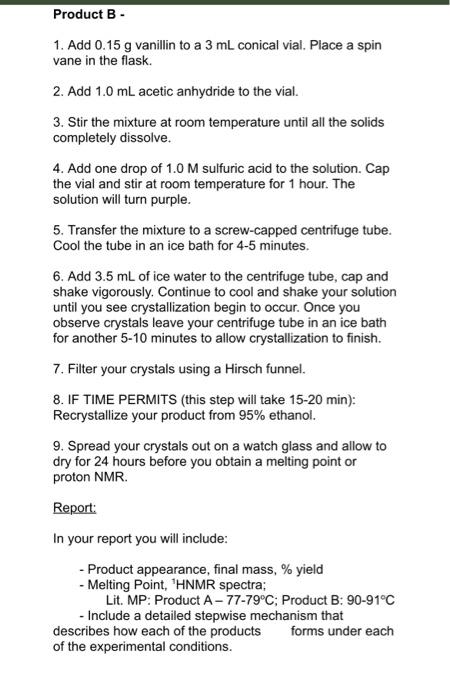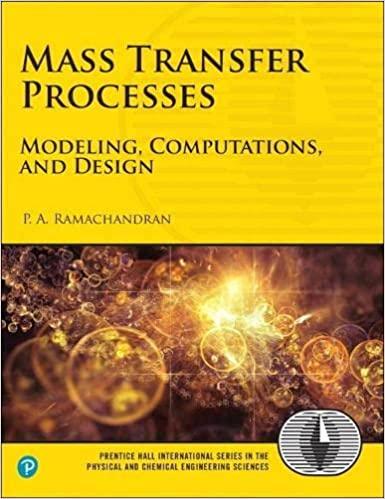Esterification of Vanillin: The Aldehyde Enigma NaOH Product A HO . H.SO H , Products Introduction: The acid and base catalyzed reaction of vanillin with acetic anhydride gives two unique products. In this experiment you will perform each reaction separately then by 'HNMR spectroscopy of the respective products you will attempt to identify what the product of each reaction is. You may find the use of literature and other outside sources helpful in this experiment. Procedure: Product A- 1. Dissolve 0.30 g of vanillin in 5 mL of 10% sodium hydroxide in a 50 ml Erlenmeyer flask. 2. Add 6 g of ice water and 0.8 mL of acetic anhydride. 3. Stopper the flask with a clean stopper. Carefully shake the flask several times over a 20 minute period. You should observe a milky white precipitate form over the course of these steps. 4. Filter the precipitate using a Hirsch funnel. 5. Recrystallize the solid product from 95% ethanol. Be careful not to warm the solution above 65C during the recrystallization as this can cause the product to melt or decompose. 6. Spread your crystals out on a watch glass and allow your crystals to dry for 24hrs before obtaining a proton NMR. Product B - 1. Add 0.15 g vanillin to a 3 mL conical vial. Place a spin vane in the flask. 2. Add 1.0 mL acetic anhydride to the vial. 3. Stir the mixture at room temperature until all the solids completely dissolve. 4. Add one drop of 1.0 M sulfuric acid to the solution. Cap the vial and stir at room temperature for 1 hour. The solution will turn purple. 5. Transfer the mixture to a screw-capped centrifuge tube. Cool the tube in an ice bath for 4-5 minutes. 6. Add 3.5 mL of ice water to the centrifuge tube, cap and shake vigorously. Continue to cool and shake your solution until you see crystallization begin to occur. Once you observe crystals leave your centrifuge tube in an ice bath for another 5-10 minutes to allow crystallization to finish. 7. Filter your crystals using a Hirsch funnel. 8. IF TIME PERMITS (this step will take 15-20 min): Recrystallize your product from 95% ethanol. 9. Spread your crystals out on a watch glass and allow to dry for 24 hours before you obtain a melting point or proton NMR. Report: In your report you will include: - Product appearance, final mass, % yield - Melting Point, 'HNMR spectra; Lit. MP: Product A-77-79C; Product B: 90-91C - Include a detailed stepwise mechanism that describes how each of the products forms under each of the experimental conditions. Experiment 10 - The Aldehyde Enigma 1. What type of reaction are both of these reactions? 2. In both experiments we used large excesses of acetic anhydride. If we used exactly what was needed for each experiment how many moles of acetic anhydride would we need for each experiment? Experiment A - For each mole of vanillin you need moles of acetic anhydrided. Experiment B - For each mole of vanillin you need moles of acetic anhydrided. 3. For each reaction what role does the acetic anhydride play- nucleophile or electrophile? Experiment A- Experiment B- 16. Draw a detailed stepwise mechanism that illustrations how vanillin is converted to Product A. Be sure to include all steps, arrows and intermediates










